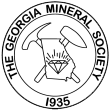GENERAL MEMBERSHIP MEETING
Meetings are 7:30 pm the first Monday of each Month
4138 Steve Reynolds Boulevard
Norcross, GA 30093-3059
Visitors and Guests are Welcome!

Date: April 7, 2025
Social Time: 7:00 pm
Meeting Time: 7:30 pm
Location: In-Person at GMS and Virtual via Zoom (link is on the GMS calendar here)
Speaker: Ryan Currier, Igneous Petrologist at University of West Georgia
Topic: Flood Basalts: A Deluge of Noachian Proportion
Flood basalts are Earth's most massive outpourings of lava. They represent 100,000s of cubic kilometers of lava erupted over relatively short timescales (~1 million years). While no flood basalts have erupted over recorded history, they are a compelling system to study due to the consequences of their volcanism. On one hand, flood basalts have the capacity to reshape our climate and may deeply impact the biosphere. On the other hand, flood basalts can be the drivers of economically important ore formation. In this presentation, we will investigate several flood basalt systems, including Antarctica, India, the Pacific Northwest, and Georgia.
Ryan Currier is an igneous petrologist at University of West Georgia. Ryan graduated from undergrad at Michigan State University, then received both his Master's and PhD at Johns Hopkins University. He primarily spends his time thinking about magmas that never made their way to the surface (i.e., plutons), but understanding this realm has bearing on our understanding of volcanic systems. Ryan has many interests across the realm of science, and anything that is shiny is sure to grab his attention.
Hope to see you all there.
Jane Stone
Vice President of Programs
General meetings are usually on the first Monday of the month. If this date falls on a holiday, the general meeting will be on the SECOND Monday of the month. In September, the annual picnic and auction replaces the general meeting and is held on a Saturday.
Click below for a map and directions

Copyright © Georgia Mineral Society, Inc.
